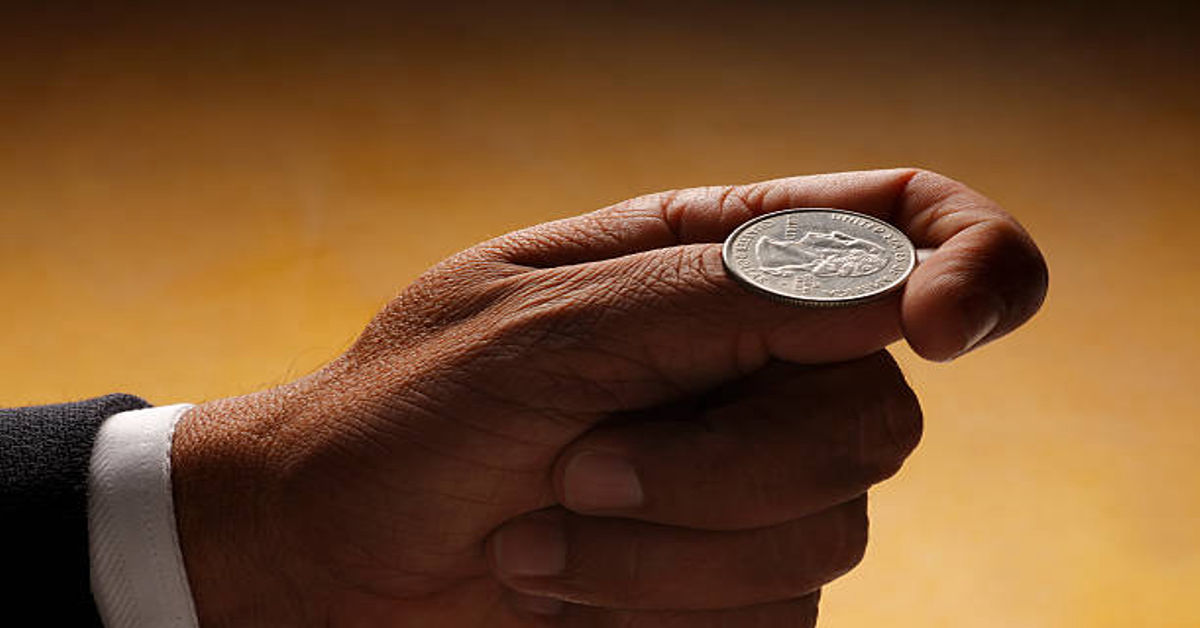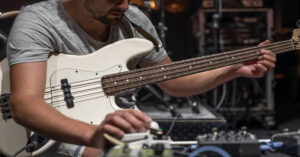A coin flip, also called a coin toss, is one of the simplest yet most powerful methods humans have used for centuries to make unbiased decisions. Whether in sports, science, everyday life, or classroom experiments, the act of flipping a coin carries enormous value because it represents a form of randomness that is easy to understand yet deeply mathematical. Although most people treat a coin flip as a trivial act with two obvious outcomes—heads or tails—the concept behind it is far richer. It connects physics, statistics, psychology, probability theory, and even ethics. Many scholars and mathematicians have studied the behavior of a coin toss to understand how randomness works and how fairness can be preserved in decision-making.
Despite its simple appearance, a coin flip is not just a random gesture. It is a practical tool used in sports to determine which team starts with the ball, by teachers to pick between equal choices, by negotiators to avoid conflict, and even by researchers to simulate random variables. Some legal systems historically used coin-flips to break ties in elections when candidates received the same vote count. In scientific research, a coin-flip can help in random sampling, random assignment, and probability demonstrations. Because it is accessible, inexpensive, and free from manipulation when done properly, a coin flip stands as a universal symbol of impartiality.
This article explores coin flips at a deeper level, covering all essential aspects such as the history of coin flipping, the science behind randomness, probability calculations, experimental outcomes, biased coin issues, applications across various fields, and common misconceptions. In addition, tables are included to bring clarity to probability patterns and result distributions. By the end, you will have an expert-level understanding of something that appears extremely simple but carries profound meaning.
History and Origins of Coin Flipping
Coin flipping traces its origin to ancient civilizations that used small metal tokens, stones, and shells to settle disputes by random chance. In early Greek culture, a game called “pile or cross” was used in a manner similar to modern coin flipping, where a marked side represented one outcome and a blank side represented another. Romans had their own version known as “navia aut caput” (ship or head), using coins that often featured a ship on one side and a head of a ruler on the other.
In medieval times, coin flips evolved into a standard conflict-resolution strategy. It was widely used because it was simple, fast, and carried a sense of divine fairness. People believed that fate or destiny controlled the outcome. This cultural belief helped establish coin flipping as a respected method of settling disputes when human judgment could lead to unfairness.
Through the centuries, coin flipping became standard in sports. Modern sporting organizations—from soccer to cricket to American football—use a coin flip at the beginning of a game to make decisions such as which team starts with possession. In science and mathematics, the coin flip became a core teaching tool to demonstrate randomness and independent probability events.
Today, the coin flip has become so integrated into human decision-making that people rely on it in various personal situations: choosing between equal options, breaking ties, resolving debates among friends, or simply adding fun to a moment. Despite digital randomizers and computer-generated randomness, the physical coin-flip still feels more personal and trustworthy.
Understanding the Science of a Coin Flip
A coin-flip is often described as a random experiment, meaning that although the result cannot be predicted before the flip, the outcome will be either heads or tails. Scientifically, a coin-flip is influenced by physical forces such as angular momentum, flipping speed, air resistance, torque, and the surface on which the coin lands. Despite this, the process is still considered unpredictable because even extremely small variations in force can drastically change the outcome.
When flipping a coin manually, the following factors influence the randomness:
1. The Force Used to Flip the Coin
If someone flips the coin gently, it may not rotate much, increasing the chance of landing on the same side it started on. A stronger flip produces more rotation, increasing randomness.
2. The Height of the Flip
A higher flip means more time in the air and more possible rotations. Short flips reduce randomness.
3. The Catch vs. Letting It Fall
Some people catch the coin in the air and slap it onto the back of their hand. Others let it fall to the ground. Each method slightly changes probabilities because friction and bounce affect results.
4. Weight Distribution of the Coin
If a coin is imperfect or worn on one side, it may disproportionately favor one outcome. This is known as coin bias.
5. Landing Surface
Soft surfaces can absorb impact and may cause the coin to tilt, while a hard surface allows more precise landing. Variations between surfaces can produce different probabilities.
Although computers can simulate a coin flip digitally with perfect fairness, physical coin flips will always have minor imperfections. Still, these imperfections are usually so small that a properly flipped coin is considered fair for most real-world uses.
Probability and Mathematical Explanation
The probability of a fair coin flip can be expressed simply:
- Probability of Heads = 1/2
- Probability of Tails = 1/2
These probabilities do not change regardless of how many times the coin is flipped. In mathematics, this type of event is called independent, meaning previous flips do not affect future ones. What happened before does not influence what happens next, even though human intuition often gets tricked.
For example, if you flip heads five times in a row, many people think tails is “due” next. But in reality, the chance remains the same: 50% each time. This misunderstanding is called the gambler’s fallacy.
Table: Probability of Multiple Flips
| Number of Flips | Possible Outcomes | Probability of All Heads | Probability of All Tails |
|---|---|---|---|
| 1 | 2 | 1/2 | 1/2 |
| 2 | 4 | 1/4 | 1/4 |
| 3 | 8 | 1/8 | 1/8 |
| 4 | 16 | 1/16 | 1/16 |
| 5 | 32 | 1/32 | 1/32 |
The more flips you perform, the smaller the probability of getting all heads or all tails.
Fair vs. Biased Coins
Most coins appear fair, but hidden biases can exist. A biased coin is one where heads and tails do not have equal probability. This can occur when:
- The coin is unevenly worn
- One side is heavier
- One side has more engraving
- The material thickness differs
- The flipping technique is controlled intentionally
Studies show that if someone always starts a coin flip with the same side facing up, the starting side may have a slightly higher probability of landing face-up, especially with soft flips.
Table: Examples of Bias Sources
| Source of Bias | Description | Effect on Probability |
|---|---|---|
| Wear and Tear | One side more scratched | Slight increase in landing on smoother side |
| Thickness Variation | One face heavier | Heavier side more likely lands down |
| Controlled Flip | Manipulated technique | Favors pre-decided outcome |
| Imperfect Minting | Uneven design | Creates imbalance |
Although real-world bias exists, it is usually very small and does not significantly affect casual decision-making.
The Psychology Behind Coin Flips
People often believe that coin flips are objective, but psychology plays a role in how people perceive randomness. Humans dislike uncertainty and unpredictability, and the coin flip allows them to feel a sense of fairness and closure. In fact, many use a coin flip not just to decide but to confirm what they already subconsciously want.
For example, if someone flips a coin to choose between two options and feels disappointed by the result, it reveals their true preference. In this way, coin flips sometimes act as emotional clarifiers rather than pure randomizers.
In stressful decision-making situations, flipping a coin reduces cognitive load. Instead of analyzing every detail, the person relies on randomness. This also helps avoid unfair influence, biases, or arguments.
Importance of Coin Flipping in Sports
Coin flips are especially important in sports due to their ability to prevent arguments and manipulate outcomes. Most sports use a coin toss to decide which team gets the first chance, possession, or side of the field.
Examples:
1. Football (Soccer)
Decides which team kicks off and which side they start on.
2. American Football
Determines which team receives the first kickoff or chooses field direction.
3. Cricket
The toss determines whether a team bats first or fields first—a strategic decision that can influence the match.
4. Tennis
Used to determine which player serves first.
A coin toss ensures neutrality and avoids claims of unfair advantage.
Scientific Experiments with Coin Flips
Coin flips are widely used in classrooms and laboratories to teach probability, randomness, and statistics. Common experiments involve flipping a coin many times and recording results to check whether they approximate theoretical probability.
Expected vs. Actual Outcomes
| Number of Flips | Expected Heads | Expected Tails | Possible Variation |
|---|---|---|---|
| 10 | 5 | 5 | ±2 |
| 50 | 25 | 25 | ±5 |
| 100 | 50 | 50 | ±8 |
| 500 | 250 | 250 | ±20 |
Variation occurs due to randomness but decreases proportionally as the number of trials increases. This demonstrates the law of large numbers, which states that outcomes become closer to theoretical probability as the number of trials increases.
Real-World Uses of Coin Flipping
Coin flipping is used in many real-world contexts:
1. Decision Making
When two choices seem equal, a coin flip helps with an unbiased final decision.
2. Conflict Resolution
People use coin flips to avoid arguments or to select someone out of a pair.
3. Random Sampling
Researchers use coin flips to decide participant assignment.
4. Game Mechanics
Board games, card games, and children’s games often incorporate coin flips.
5. Election Tie-Breaking
Some jurisdictions resolve tied votes with a coin flip.
6. Computing and Simulations
Random number algorithms often use the mathematical equivalent of a coin flip.
Coin flips remain relevant because they balance simplicity and fairness.
Common Misconceptions About Coin Flips
Misconception 1: Heads and Tails Must Even Out in Small Samples
People expect small sets of flips to be balanced, but randomness does not guarantee this immediately.
Misconception 2: A Long Streak Means the Result Will Change Soon
This is the gambler’s fallacy; each flip remains independent.
Misconception 3: Catching a Coin Ensures More Fairness
Catching can introduce bias because the method of catching or flipping influences the outcome.
Misconception 4: Heavier Coins Flip Better
Coin flipping is about rotation, not weight. Even heavy coins can be fair if balanced.
Conclusion
A coin flip is far more than a quick method of making decisions. It is a profound representation of randomness, fairness, and simplicity. The combination of physical motion, mathematical probability, psychological meaning, and practical usefulness makes coin flipping a universal tool across societies and fields. Although a coin flip appears to be a basic two-outcome event, it holds deep insights into human thinking, scientific experimentation, decision-making, and the philosophy of chance. Understanding how coin flips work—from bias and probability to real-life application—gives us a deeper appreciation of randomness and fairness in everyday life.
FAQs
1. Is a coin flip truly 50/50?
Yes, a properly flipped and unbiased coin has an approximate 50% chance of landing on either side, though slight imperfections can create minimal bias.
2. Can someone manipulate a coin flip?
Yes, with practice a person can influence the outcome by controlling the flipping force or starting position, but this manipulation is difficult to perform consistently.
3. Why do sports use a coin toss?
Sports use coin flips because they provide a fast, simple, and unbiased way to determine starting advantages without argument.
4. Does catching the coin instead of letting it fall change results?
Catching can slightly alter fairness because the method of catch and flip technique may favor the starting side.
5. What does a coin flip represent in decision-making?
A coin flip represents impartial randomness. It is also psychologically useful because it helps people clarify hidden preferences when they react to the result.









